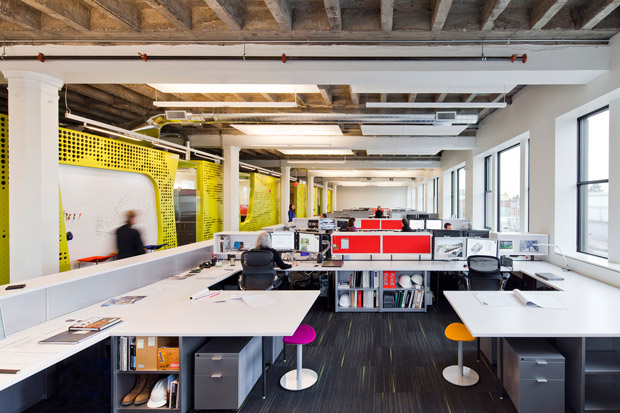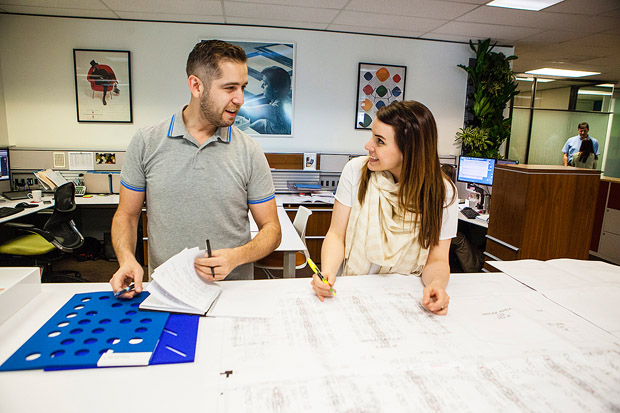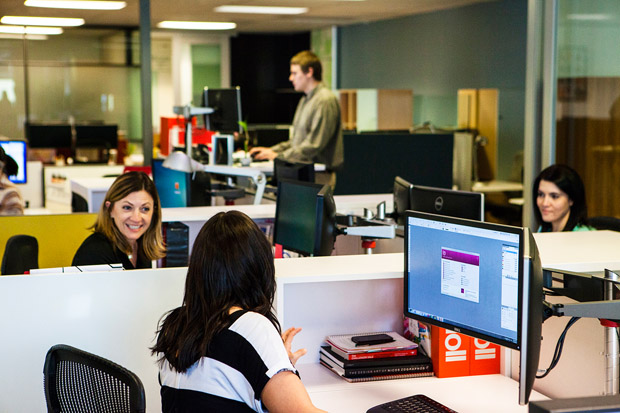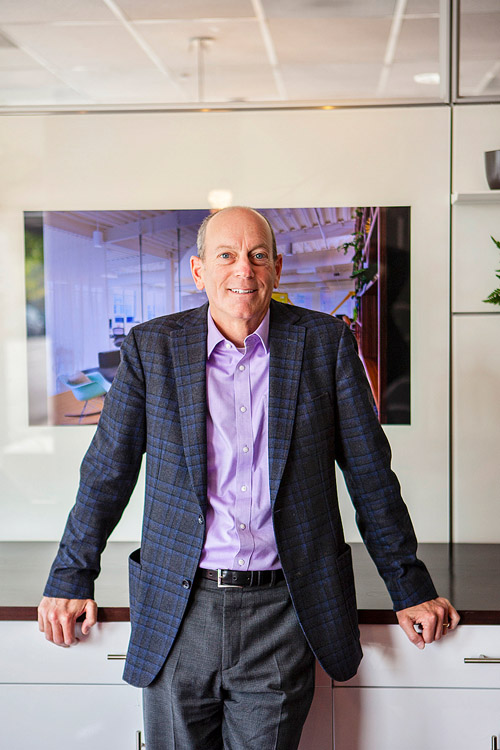BY JANE VERDURMEN PEART
Oregon-based Environments helps companies create inspired workspaces. “Simply put, we help companies future-proof their workspaces,” says Chris Corrado, president. Since 1988,Environments has witnessed firsthand the changing landscape of business. Native Portlander and Environments founder Corrado says, “We help our clients navigate the complex realities of the workplace today and plan for their future in a very mindful, strategic way. We think of ourselves as their partners in the process.”
BY JANE VERDURMEN PEART

Environments project at PIVOT Architecture in Eugene.
| Chris Corrado, President, Environments |
Oregon-based Environments helps companies create inspired workspaces. “Simply put, we help companies future-proof their workspaces,” says Chris Corrado, president. Since 1988, Environments has witnessed firsthand the changing landscape of business. Native Portlander and Environments founder Corrado says, “We help our clients navigate the complex realities of the workplace today and plan for their future in a very mindful, strategic way. We think of ourselves as their partners in the process.”
If there’s one constant in today’s workplace, it’s change. Technology changes every 18 months, and companies go through organizational changes every three years. The Environments team pushes the envelope of traditional workspace programs with their forward-thinking perspective that incorporates the latest research in workplace trends, IT, HR and real estate. “Real estate, people and technology are three of the biggest assets a company has. We help our clients integrate and leverage these in a way that brings their brand to life,” says Environments GM Doug Magnuson.
Sustainability is a core part of Environments’ business model and encompasses the well-being of people and the planet. A sustainable business includes a healthy, happy workforce, and that contributes to the bottom line. According to LinkedIn, 85% of the workforce is actively or passively looking for a new employer. “The workplace itself can have a positive impact on employee well-being, increasing engagement, productivity and attracting new talent,” says Sarah Drew, VP of workplace innovation.

What makes the Environments team happy is collaborating with clients to create workspaces that best serve their clients’ brands and cultures. The success of a project begins long before the walls go up and the furniture has been selected. It starts at the early planning stage, when the goals and objectives of the project are being formulated. It’s then that the Environments team can lend their insights and expertise, and be an innovative contributor in the process. “Architecture and design firms are valued partners in every project. Our varied perspectives and experience oftentimes results in uniquely creative and effective solutions,” says Drew. Environments’ clients include: Daimler Trucks North America, Legacy Health, Lattice Semiconductor, University of Portland and the Portland Trailblazers.
Just walking into Environments feels inspiring; you immediately get a sense for their positive energy, friendly culture, and valued partnerships with Knoll and DIRTT. “Furniture and the built environment need to be agile and adaptable to support work and serve our clients’ needs today and into the future,” says Pam Armstrong, VP of Environments’ interior construction group.

Providing various opportunities for impromptu collaboration is integral to how the team works at Environments.
Knoll was founded on Florence Knoll’s pioneering principle that “good design is good business.” That principle is evident today more than ever. It’s clear walking through the space that the day of a one-size -fits-all workspace is long gone. Environments is a working showroom, more of a workspace lab, where you immediately get a sense for the way work gets done here. There is a casual meeting going on in a sofa-like conversation pit, lounge chairs are occupied by people on laptops and iPhones, and there’s another group having a brainstorming meeting at a counter height table near the proverbial water cooler. There are work areas that are suited to both teams and individuals, with offices and enclaves for privacy. Standing-height tables, multiple screens and chairs that look as athletic as running shoes give the sense that ergonomics have become more holistic and dynamic. “The workspace is now the entire workplace, and that requires an approach that is as unique as each client,” says Drew. “Our solutions must reflect the culture and brand of our clients; to us that’s good design.”
You get a sense for how innovative DIRTT is by seeing it in a myriad of forms. There are walls, floors, doors, power, data and millwork. It can include graphics and a living wall, but for DIRTT, it’s really what’s unseen that counts. It is an architectural platform enhancing the built environment through seamless integration of building services, technology, aesthetics, and furniture. One of DIRTT’s most notable features is its relationship to building services allowing clean and immediate access. “Businesses today need changes to occur fast, whether you need to access services or move an entire wall. DIRTT allows these changes to occur quickly, at minimal cost and with virtually no disruption,” says Armstrong. Prefab interior construction creates dynamic opportunities versus conventional approaches.
At Environments, design isn’t limited to space or products, it’s their approach to business. “We apply the principles of design thinking to how we work with our clients and partners. Oftentimes we are able to see things and respectfully challenge assumptions, resulting in better solutions for our clients,” says Corrado. For Environments, every client and project is different. Collaboration is the secret sauce that makes a project successful.


